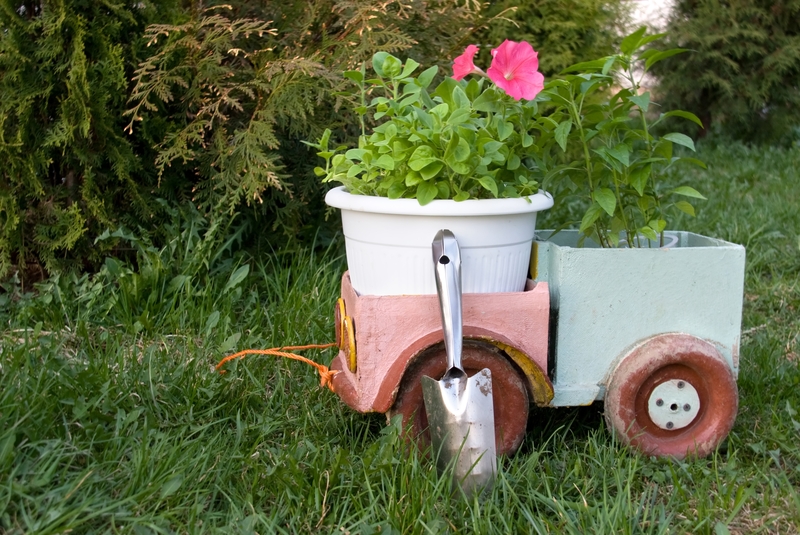Sustainable Practices for Reducing Plastic Impact
Plastic pollution is one of the most critical environmental challenges facing our planet today. From the deepest oceans to the highest mountaintops, traces of plastic litter are found everywhere. To address this urgent problem, sustainable practices for reducing plastic impact are essential. In this article, we will explore a comprehensive range of eco-friendly methods to minimize plastic waste, curtail our dependence on single-use plastics, and foster a healthier, cleaner environment for future generations.

Understanding the Plastic Problem
Plastic is lightweight, inexpensive, and highly versatile, making it ubiquitous in modern life. However, these same qualities lead to excessive use and improper disposal. Single-use plastics like bags, straws, bottles, and packaging account for about 50% of all plastic produced annually. Unfortunately, most of these items are used just once before being discarded.
- Every minute, the equivalent of one garbage truck of plastic is dumped into oceans
- Out of 9.2 billion tons of plastic produced between 1950 and 2017, only about 9% has been recycled
- Plastic pollution threatens wildlife, contaminates food chains, and contributes to global climate change
Key Principles of Sustainable Plastic Reduction
To efficiently reduce the impact of plastics, several fundamental principles guide sustainable practices. These focus on minimizing plastic use, reusing materials, recycling efficiently, and encouraging responsible consumption patterns.
1. Refuse and Reduce Single-Use Plastics
- Choose alternatives: Replace plastic bags, straws, and cutlery with reusable items made from stainless steel, bamboo, or glass.
- Shop smart: Opt for products with minimal or compostable packaging. Support brands committed to plastic-free packaging initiatives.
- Buy in bulk: Purchasing items in bulk reduces the overall packaging waste and the carbon footprint related to transportation.
2. Reuse and Repurpose
Instead of discarding plastic products after a single use, find new ways to repurpose and reuse them. Durable containers, shopping bags, and bottles can last for years when cared for properly. Upcycling gives new life to old items, helping to curb the demand for new plastics.
- Use glass or stainless steel containers for food storage
- Transform plastic bottles into planters or craft projects
- Repurpose packaging materials for shipping or organizing at home
3. Responsible Recycling
*Proper recycling is a cornerstone of sustainable practices for reducing plastic impact*. However, contamination and lack of awareness often hinder the recycling process.
- Clean plastics before recycling: Rinse food containers to reduce contamination and increase recyclability.
- Know your local rules: Each municipality has specific guidelines for what plastics can be recycled. Familiarize yourself with these to avoid confusion.
- Participate in collection drives: Join local or community-led initiatives aimed at collecting and recycling hard-to-recycle items like bottle caps or grocery bags.
Innovative Alternatives to Traditional Plastics
The market is responding to consumer demand for sustainable options by introducing innovative alternatives to conventional plastics. These alternatives are usually biodegradable, compostable, or made from renewable materials, and are fundamental to reducing the impact of plastics.
Biodegradable Plastics
- Starch-based plastics are made from corn, potatoes, or other plants and break down more easily than petroleum-based plastics.
- PLA (Polylactic Acid) products are widely used for disposable cutlery and food packaging.
Compostable Packaging
*Compostable materials degrade into natural elements in industrial composting conditions, leaving no toxic residue and enriching the soil*.
- Pulp trays for fruits and vegetables
- Compostable mailers and shipping bags
- Bagasse clamshells (made from sugarcane fiber)
Reusable and Refillable Systems
- Refill stations for household cleaning products, shampoo, and other essentials are becoming increasingly available.
- Deposit-return systems for beverage bottles incentivize consumers to return containers for reuse.
Lifestyle Changes to Reduce Plastic Impact
Individuals can make a significant difference through conscious daily choices that minimize their personal dependency on plastics. Here are some practical lifestyle changes that contribute to sustainable plastic reduction:
Avoid Bottled Water and Beverages
- Use a refillable water bottle made from stainless steel or glass.
- Install a water filter at home or in the office to improve tap water quality.
- Order drinks "no straw" when dining out.
Eco-Friendly Shopping Habits
- Carry a reusable bag every time you shop; keep spares in your car or at work.
- Choose produce that is not pre-wrapped in plastic.
- Support zero-waste stores and farmer's markets that promote packaging-free products.
Switch to Sustainable Household Products
- Replace plastic sponges and scrubbers with natural or biodegradable cleaning tools.
- Opt for plastic-free personal care products such as bamboo toothbrushes, refillable deodorant, and bar soaps.
- Use wax wraps or glass containers instead of plastic wrap or zip-top bags.
Supporting Companies and Legislation for Plastic Reduction
The collective efforts of individuals, businesses, and governments can accelerate the shift toward a plastic-free society. When consumers support businesses that prioritize sustainability, it creates a positive feedback loop encouraging more companies to adopt environmentally conscious policies.
Choose Sustainable Brands
- Look for products labeled with eco-certifications verifying reduced plastic usage.
- Support companies that use recycled or plant-based packaging.
- Share your feedback with brands about their packaging and advocate for responsible sourcing.
Advocate for Plastic Reduction Policies
- Participate in community clean-up initiatives and educational campaigns.
- Engage with policymakers to promote bans on single-use plastics and improved recycling infrastructure.
- Vote for leaders and measures supporting plastic pollution reduction and sustainability.
Education and Community Engagement
*Education is a powerful tool for promoting sustainable practices for reducing plastic impact!*
- Schools can integrate plastic pollution topics into their curriculum, raise awareness, and encourage eco-friendly habits among students.
- Community groups can organize workshops, recycling drives, and upcycling competitions to engage residents.
- Social media campaigns can help spread awareness about the impact of plastics and sustainable alternatives.
Corporate Responsibility and the Circular Economy
The circular economy model encourages companies to design products for durability, reusability, and recyclability--reducing reliance on virgin plastics and keeping materials in the supply chain for as long as possible.
- Adopt eco-design practices that eliminate unnecessary packaging and incorporate recycled materials.
- Implement take-back programs so consumers can return used products for proper recycling or reuse.
- Invest in research and development for bio-based plastics and new recycling technologies.
Technological Innovations in Tackling Plastic Waste
Science and technology are driving new solutions for sustainable plastic impact reduction. Advances in chemistry, materials science, and waste management are making it easier to process plastics and convert them into valuable resources or harmless products.
- Enzymatic recycling uses engineered enzymes to break down plastics into building blocks for new products.
- Plastic-to-fuel technologies convert collected plastic waste into usable fuels, reducing landfill and ocean dumping.
- Automated sorting systems powered by AI improve recycling purity and efficiency in waste management facilities.
Global Success Stories in Plastic Reduction
Several countries and cities have pioneered ambitious, sustainable strategies for reducing plastic impact, serving as models for others:
- Kenya implemented one of the world's strictest bans on plastic bags, reducing usage by 80% within a year.
- Germany has built an efficient bottle deposit system, achieving a 99% return rate for plastic bottles.
- San Francisco was the first major US city to ban plastic shopping bags and Styrofoam food containers, paving the way for other American cities.

Challenges and Barriers to Sustainable Plastic Practices
Despite widespread awareness, challenges remain in implementing sustainable plastic reduction strategies on a global scale:
- Infrastructure gaps for waste collection and recycling, especially in developing countries.
- Costs associated with switching to alternative materials or establishing new systems.
- Consumer habits and resistance to change.
- Lack of incentives for businesses to innovate or invest in greener solutions.
The Future of Sustainable Plastic Reduction
Looking ahead, the most promising route to a sustainable future involves a multi-faceted approach. This includes ongoing education, product innovation, policy reform, and community engagement. By combining small personal choices with large-scale systemic change, we can all play a vital role in reducing the global impact of plastics.
How You Can Make a Difference Today
- Refuse single-use plastics whenever possible.
- Carry reusable bags, bottles, and containers during your daily errands.
- Support brands and legislation that promote sustainable and eco-friendly practices.
- Educate your family and friends about the dangers of plastic pollution.
- Participate in local clean-up events and other community projects.
Together, we can create a cleaner, healthier planet by embracing sustainable practices for reducing the impact of plastics. Every effort, no matter how small, adds up to meaningful change. Let's protect our environment--one less piece of plastic at a time.